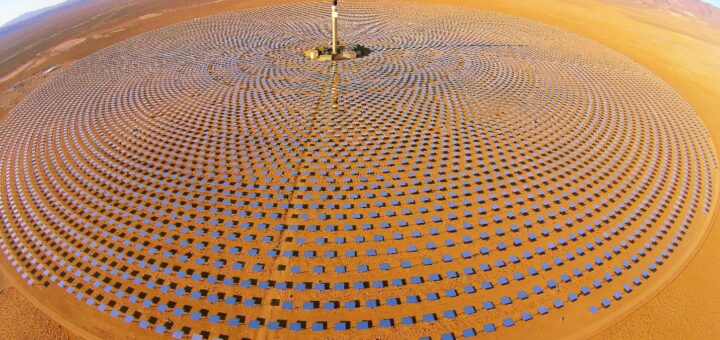Renewable energy cooperation is expected to play a role to ensure an effective and affordable energy transition in the EU. Besides cost savings in meeting the RES targets, there are multiple factors that determine a Member States’ willingness to engage in a cooperation agreement. Regarding CSP deployment in the past and potential obstacles to the use of cooperation mechanisms, several barriers stand out for cooperation discussed in this post.
According to many voices, renewable energy cooperation is expected to play a corner stone role as a way to ensure an effective and affordable energy transition in the EU, taking advantage of trade within the internal market, safeguarding security of energy supply, coordinating climate adaptation measures and optimising the cost-effectiveness of actions. In this frame, Europe wants to promote a cooperative RES deployment where the resources are most abundant, where the overall system costs would be minimized (e.g.: reduced need for backup, avoided grid investments, etc.) or where overall social benefits would be maximised (e.g.: increased security of supply, GHG savings, avoided local air pollution, employment effects, innovation effects, etc.). Aiming to provide Member States with flexibility and cost-effectiveness in their effort to achieve both EU and National binding RES targets, Directive 2009/28/EC set the legal framework for the use of cooperation mechanisms among MS. However, several heterogeneous hurdles prevented an extensive use of those mechanisms.
Besides cost savings in meeting the RES targets, there exist multiple factors that determine Member States’ willingness to engage in a cooperation agreement which may partially explain the limited use of the cooperation mechanisms during the 2009-2017 time period. All things considered, MS decision to cooperate is hindered mainly by political, public acceptance and geopolitical factors, whereas environmental and economic factors appear to positively influence such decisions. When conducting an individual factor analysis, the top five barriers include: (i) public reaction in off-taker countries (investing taxpayers money abroad), (ii) Heterogeneous regulated energy prices and support schemes, (iii) Difficulties in communicating the benefits of cooperation, (iv), Resistance to loose sovereignty and control over national energy market and (v) Uncertainty about the design options to implement the cooperation mechanisms. On the other side, the most relevant drivers to cooperation are: (i) cost savings in MS target achievement, (ii) Contribution to improve technology performance and cost reductions, (iii) EU guidance in implementing the cooperation mechanism (iv) new domestic jobs and industrial opportunities and (v) move towards the creation of an internal energy market.
One of the renewable energy technologies which may benefit from the use of the cooperation mechanisms is concentrated solar power (CSP). Compared to intermittent renewable energy technologies (RETs), CSP has a main distinguishing feature: it can be equipped with low-cost thermal energy storage, which allows it to provide dispatchable renewable power. Generation can thus be shifted to times when the sun is not shining or to maximizing generation at peak demand times. It can then be a cost-effective, flexible option in different places, especially with increasing shares of variable renewable electricity. In this context, the most significant barriers are the higher costs of CSP compared to other renewables (on an LCOE basis), heterogeneous regulated energy prices and support schemes, resistance to lose sovereignty over energy market and existing interconnections capacities. On the other hand, the most relevant drivers to the use of the cooperation mechanisms for CSP in the future include the dispatchable nature of CSP, new domestic jobs and industrial opportunities, complementarity with PV and policy ambition (renewable energy targets).
As far as the market uptake of CSP is concerned, the perceived relevance of different drivers and barriers suggests the need to combine different types of instruments which address them. Therefore, a policy mix might be required. More precisely, regarding the past drivers of CSP deployment, the experts have suggested the importance of deployment support, policy framework conditions and policy ambition and the technology being regarded as proven (technology risks). Dispatchability is regarded as the main future driver of the technology, followed by policy framework conditions and policy ambition and complementarity with PV. Moreover, investors confirm the relevance of dispatchability as a driver, together with key technology features (maturity and good performance of the technology) and investors’ features (accumulated knowledge and experience) specifically for the case of parabolic trough.
Regarding CSP deployment in the past, several barriers stand out. These include higher costs, retroactivity, lack of stability and ambition of targets and low levels of deployment support. Higher costs, limited resource potentials (DNI) and retroactivity, lack of stability and ambition of targets are perceived as the most relevant future barriers for experts. The view of investors on those barriers is significantly different. They stress the importance of administrative processes, construction permits and grid connection. In short, the views of investors and experts regarding both drivers and barriers are deemed complementary, since they focus on different levels of analysis.
Read more on the report on barriers to the use of renewable energy cooperation mechanisms in the EU here.
Read more on the report on potential obstacles to the use of cooperation mechanisms for CSP in the future here.
Read more on the report on drivers and barriers to the market uptake of CSP here.

This article is an output of the EU-funded MUSTEC project.
MUSTEC
The MUSTEC consortium consists of nine renowned institutions from six European countries and includes many of the most prolific researchers in the European energy policy community, with very long track records of research in European and nationally funded energy policy research projects.
MUSTEC main results are the following:- identifying the barriers holding CSP back and limiting its expansion in Europe, in the context of the energy and climate targets of 2030 and beyond,
- finding the drivers for CSP and the potential niches in which intra-European CSP trade can play an important role for the decarbonisation, stabilisation and integration of the European power system, and
- proposing concrete policy solutions to overcome the identified obstacles and create the necessary enabling conditions for European CSP growth
- Project title: Market Uptake of Solar Thermal Electricity through Cooperation (MUSTEC)
- Funding scheme: European Union Horizon 2020 Programme (EU H2020, grant agreement no. 764626)
- Duration: 3 years (1 October 2017 – 30 September 2020)
- Project coordinator: Centro de Investigaciones Energéticas, Medioambientales y Tecnológicas – CIEMAT, Spain
- Project website: http://www.mustec.eu



